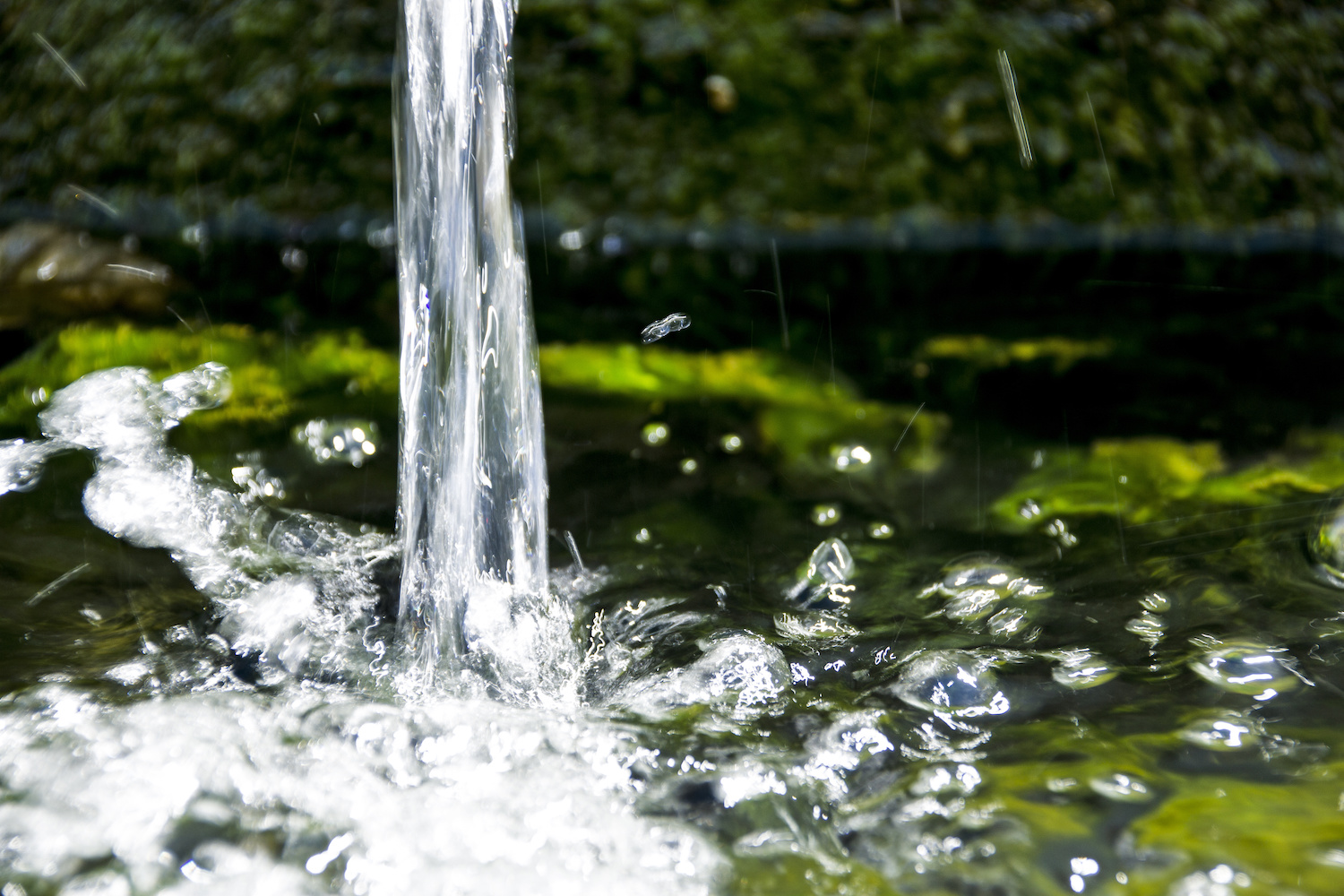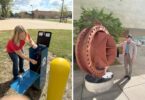Water scarcity around the world has been increasing. Population increase, industrialization, agriculture, and climate have placed a large strain on water supplies. Declining supply has caused government agencies to investigate solutions that will look to provide long-term availability for their water resource.
In the United States scarcity in the west has been a long problem. It was back in the 1800s that Mark Twain was attributed with the quote: “Whisky’s for drinkin’ and water’s for fightin’”. The west was already a dry climate, however, in recent decades old drought has exacerbated the conditions.

Decentralized Systems have long played a role in positive water management by replenishing local aquifers
The Colorado River supplies over 40 million people in the U.S. and Mexico, and due to the drought, the river has been over-allocated resulting in an investigation of alternative methods for water supply. To increase water supplies there is conservation, and various methods of indirect potable reuse, desalinization, and then direct potable reuse. Constructing new dams and reservoirs is another possibility and may be practical in developing nations but in the U.S. it has been regulated to a point where new dam construction is not feasible. Conservation has been long applied and can continue to make an impact. Direct potable reuse is only a very limited market, the technology is here (in the U.S.) but public acceptance remains a significant barrier.
Desalinization is becoming more common; technology is advancing but it still is costly. This is where indirect potable reuse through Managed Aquifer Recharge has found its place. As mentioned, it is one of the possible solutions that should be investigated, and if the conditions are favorable then it can be an effective solution.
Managed Aquifer Recharge
Managed Aquifer Recharge (MAR) replenishes aquifers allowing for future recovery and/or other benefits. MAR can be accomplished via aquifer storage, rapid infiltration basins, subsurface discharge systems, and deep well injection. Current sources such as wastewater discharges or rivers can serve to recharge aquifers. During periods of high river flows from snow melt, portions of the flow can be diverted and redirected to provide MAR. These sources of water that would otherwise discharge to open water bodies and be lost, can be reused and serve as a water supply source.

Managed Aquifer Recharge can take many forms, here a large commercial subsurface disposal bed will return much needed water as indirect potable reuse.
After surface water supplies come under stress the next place to look for water has been groundwater aquifers. These were once thought to be very sustainable but over-pumping has caused aquifers to drop substantially and consequence has been saltwater intrusion. This is where MAR’s additional benefits come into play as replenished groundwater will help to stem saltwater intrusion.
MAR Naturally: Decentralized Wastewater Treatment Systems
The ability to recharge groundwater and replenish aquifers is a noted environmental benefit of decentralized wastewater treatment systems according to the United States Environmental Protection Agency (USEPA) making decentralized wastewater treatment systems one of the most effective MAR methods.
Decentralized wastewater treatment systems locally treat and disperse water completing the water cycle in a small footprint with very little energy. However, centralized wastewater treatment systems require massive investments in energy and infrastructure.
In a typical decentralized wastewater treatment system, wastewater exits the home to the septic tank where primary treatment occurs and then is dispersed into a drainfield/leachfield/soakaway where treatment occurs within the soil until it returns to the groundwater thereby recharging the local aquifer achieving MAR.
In the centralized scenario, water is extracted from a source, treated to potable standards, then pumped via a pipe distribution network. Once this water is consumed by a facility or homeowner, it is then classified as wastewater and ultimately discharged following centralized treatment to a river or ocean. In the centralized approach, the disposal of the treated wastewater commonly occurs in local waterways, where it mixes with the existing water flows and is not captured for reuse.
Nearly 25% of the U.S. population is served by decentralized systems. This equates to approximately 18,000 gallons (68,000 liters) per person per year. Given the population of 83 million people served by onsite wastewater treatment, the total flow is roughly 1.5 trillion gallons (5.7 billion m3) per year of water that provides MAR.
This flowrate only accounts for single-family systems and there are many commercial facilities served. The extensive advancements in decentralized technology and design have enhanced the capability of decentralized wastewater treatment systems to treat large volumes of water for commercial/cluster facilities and also provide MAR. Today, there are decentralized systems that have discharges of more than 1 MGD (3,785 m3/d).
Examples of Wastewater Treatment and MAR
It is possible to take million gallon per day (3785 cubic meters per day) treatment systems and successfully implement a recharge system when proper site conditions exist. Good, percolating soils and a dedicated land area are necessary for the recharge fields. Here are a few examples.
Los Osos, California
The coastal community of Los Osos, California, needed to address wastewater issues created by outdated systems and a history of nitrogen issues and saltwater intrusion. Exacerbating the challenge, the small lots within the community were not large enough to construct code-compliant single-family septic systems.

The community of Los Osos installed an MAR system to help combat saltwater intrusion.
In 2013, a community wastewater treatment system was designed and installed that would treat a design flow of 1.6 MGD (6,060 m3/d) and recharge the local aquifer. From the community WWTP, the treated effluent is pumped to a large chamber dispersal field that was installed along a hillside with ideal soils to facilitate aquifer recharge.
With this solution, the town-owned property was converted to open space walking trails and preserved for the community, therefore the land was still functional while providing active recharge to the local aquifer.
Gold Beach, Oregon
The Town of Gold Beach, Oregon, had an existing centralized wastewater treatment system that was experiencing infiltration and inflow (I&I) problems. This resulted in the wastewater plant overflowing, solids carry-over, and then with the existing recharge system plugging and overflowing.

Decentralized systems can have large flows, the City of Gold Beach has a recharge basin adjacent to an airport, this system is designed for over 2 MGD (7,570 m3/d)
The town implemented an I&I repair program and replaced and expanded the recharge fields. The design flow of the existing WWTP was 2 MGD (7,570 m3/d) and the recharge system was expanded from nine beds to 21 with three separate zones, each with seven beds. Each zone is served by its own pump which allows for operations and maintenance flexibility and redundancy. The chamber beds were installed in the coastal plain area between the treatment plant and the ocean along the sides of a small airport. There were even design considerations in place to address the strength of the system if an airplane ran off the runway and over one of the beds. The MAR system will provide a much-needed barrier to saltwater intrusion.
Gillette Stadium – Foxborough, Massachusetts
When the new Gillette Stadium was constructed in 2000, the wastewater treatment system was required to be upgraded according to current state codes. A WWTP was designed for 250,000 gpd (945 m3/d) following a 680,000-gallon (2,575 m3) flow equalization tank to accommodate the 1 MGD (3,785 m3/d) design flow from the stadium during events. The MBR treats the wastewater to a level acceptable for reuse for toilet flushing. The wastewater is then returned to the stadium for reuse when needed or discharged to the subsurface disposal chamber beds installed below the parking lots surrounding the stadium for groundwater recharge.
Conclusion
The World Economic Forum lists water scarcity as one of the greatest challenges of our time. Fortunately, we have many solutions to address water scarcity.
Drought, high water usage from growing agricultural needs, and population increases will continue to stress aquifer supplies. Effective MAR approaches and other reuse methods can address future needs. Governments will need to make large investments of capital in this infrastructure, the age of cheap water is gone.
Related articles:
Groundwater recharge: A solution to the global water crisis?







